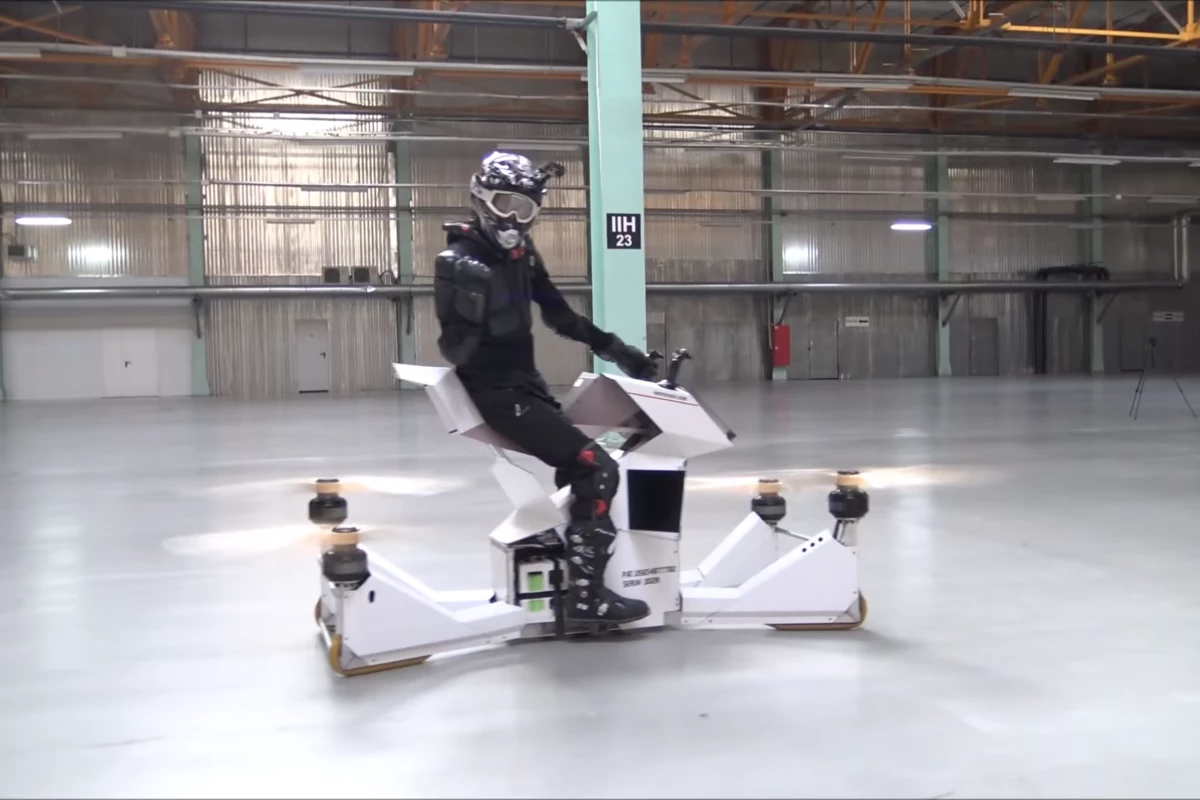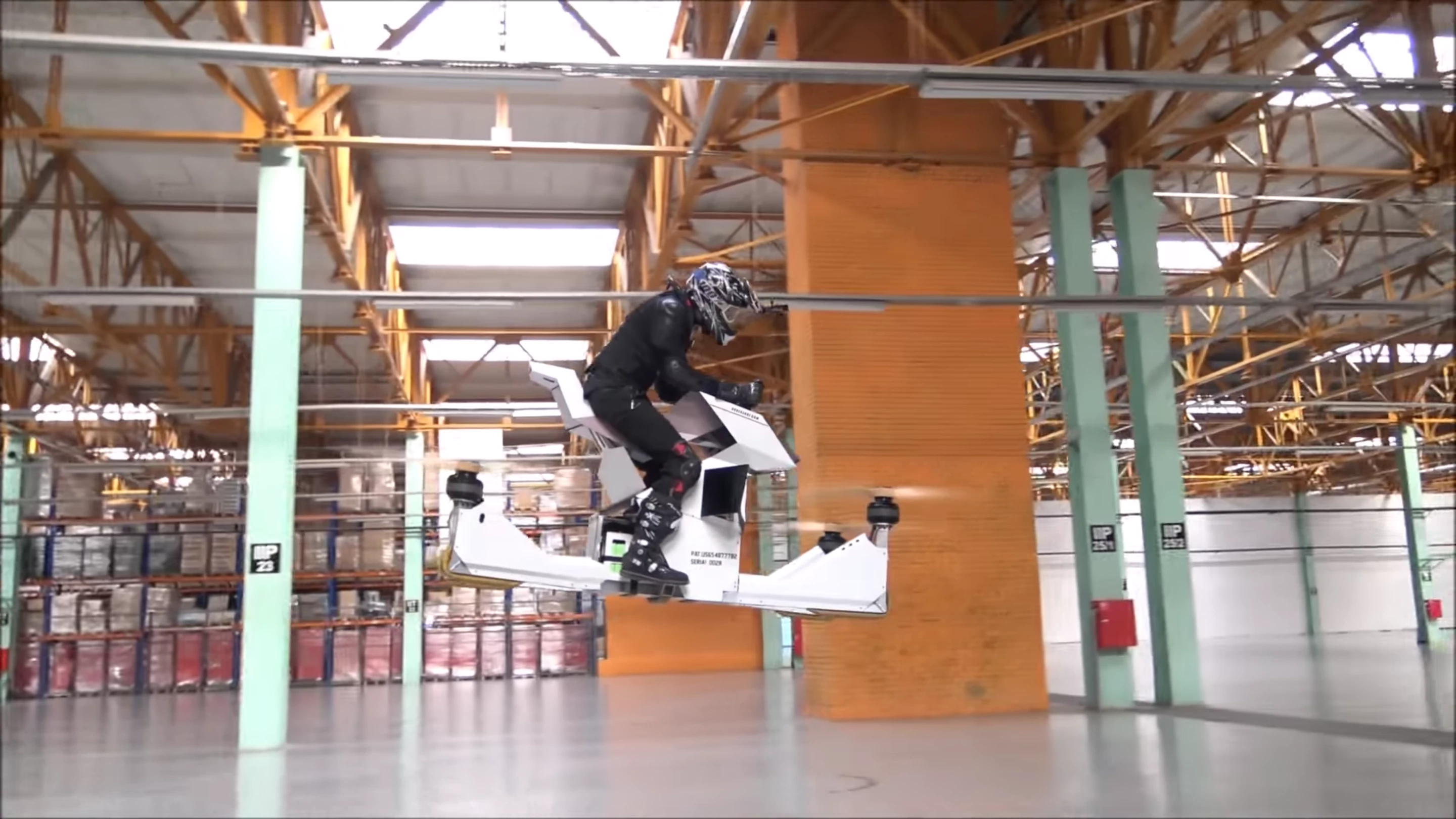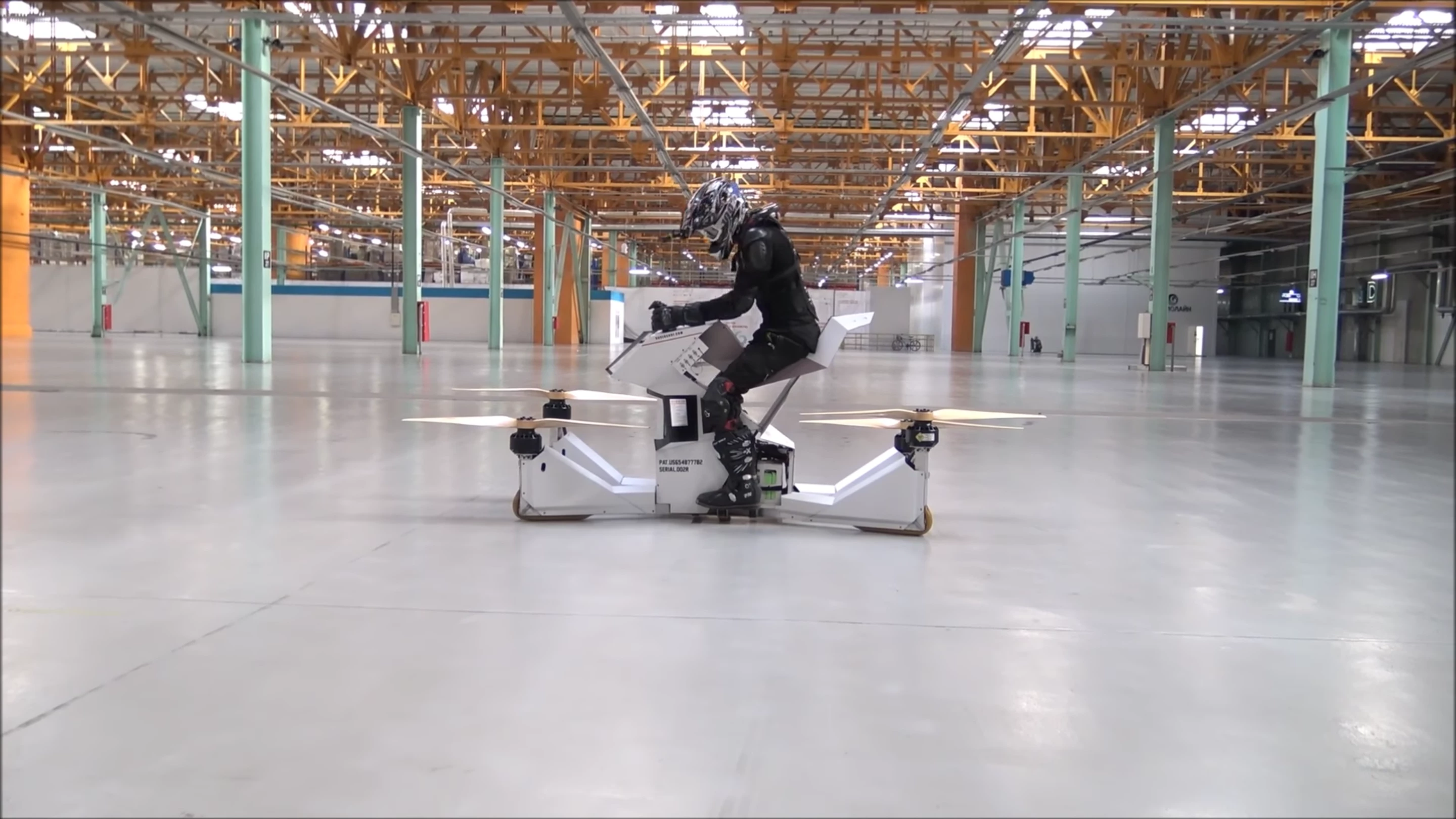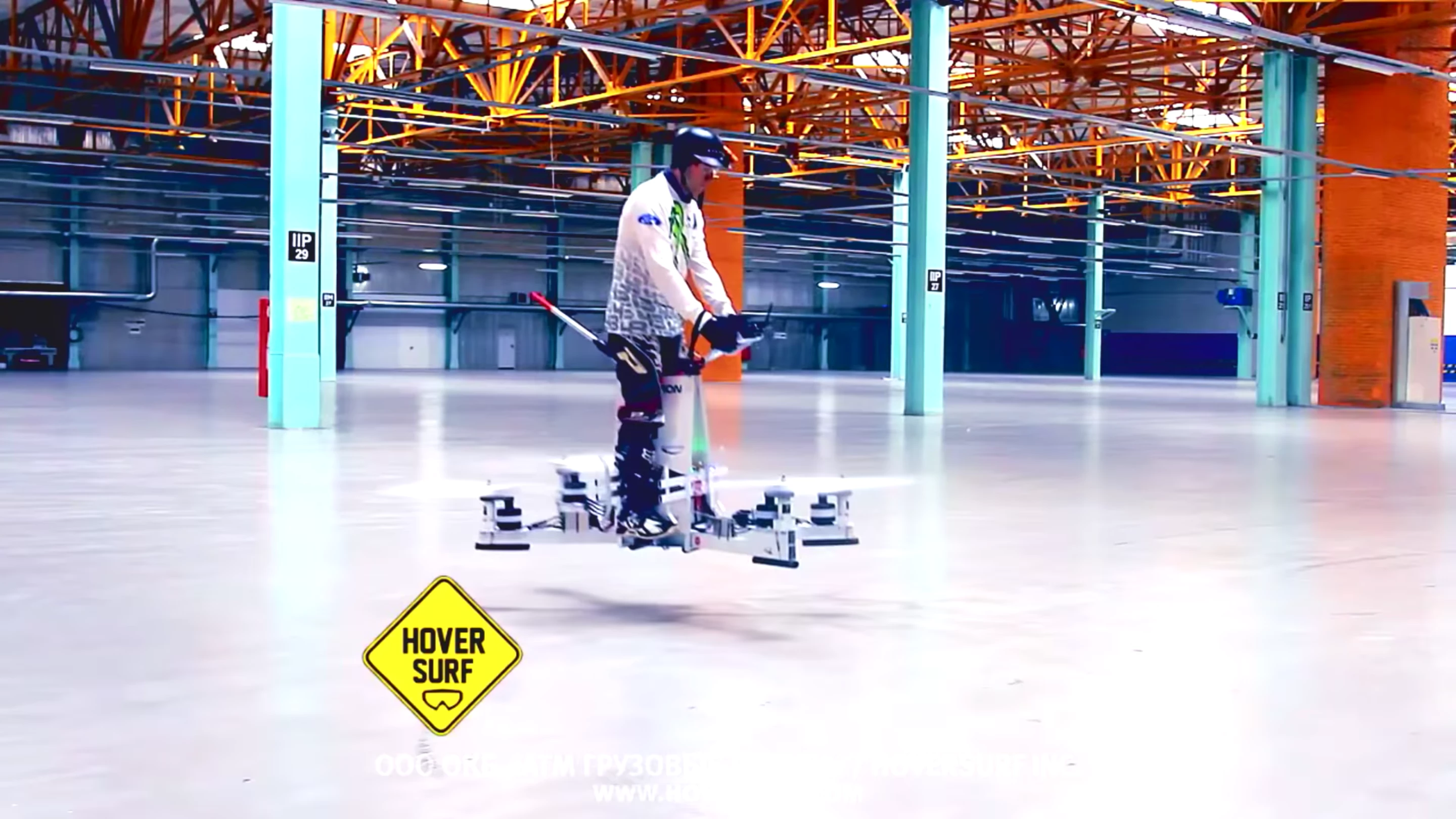Those from the health and safety brigade might want to click away now, but aspiring amputees should check out this latest manned multirotor out of Russia. The Hoversurf Scorpion is a motorcycle-styled hoverbike with four high-speed props mounted right at leg-amputation level. And it's already flying high enough to bang the pilot's head on the rafters.
Everyone saw it coming. As soon as multirotor drones hit the market somewhere around five years ago, it was obvious: one day these clever, self-stabilizing airframes would carry people around. They offered the vertical takeoff and hover advantages of a helicopter, but without the mechanical complexity, high maintenance requirements, difficult four-limbed control scheme or the huge, noisy top rotor.
What wasn't immediately obvious was just how easy it would be to build one. Today, powerful, responsive electric motors and large lithium-ion battery packs are easily available off the shelf. Accelerometers, inertial measurement units and GPS chips have become incredibly cheap and plentiful. Flight control hardware and software has matured incredibly quickly in a few short years.
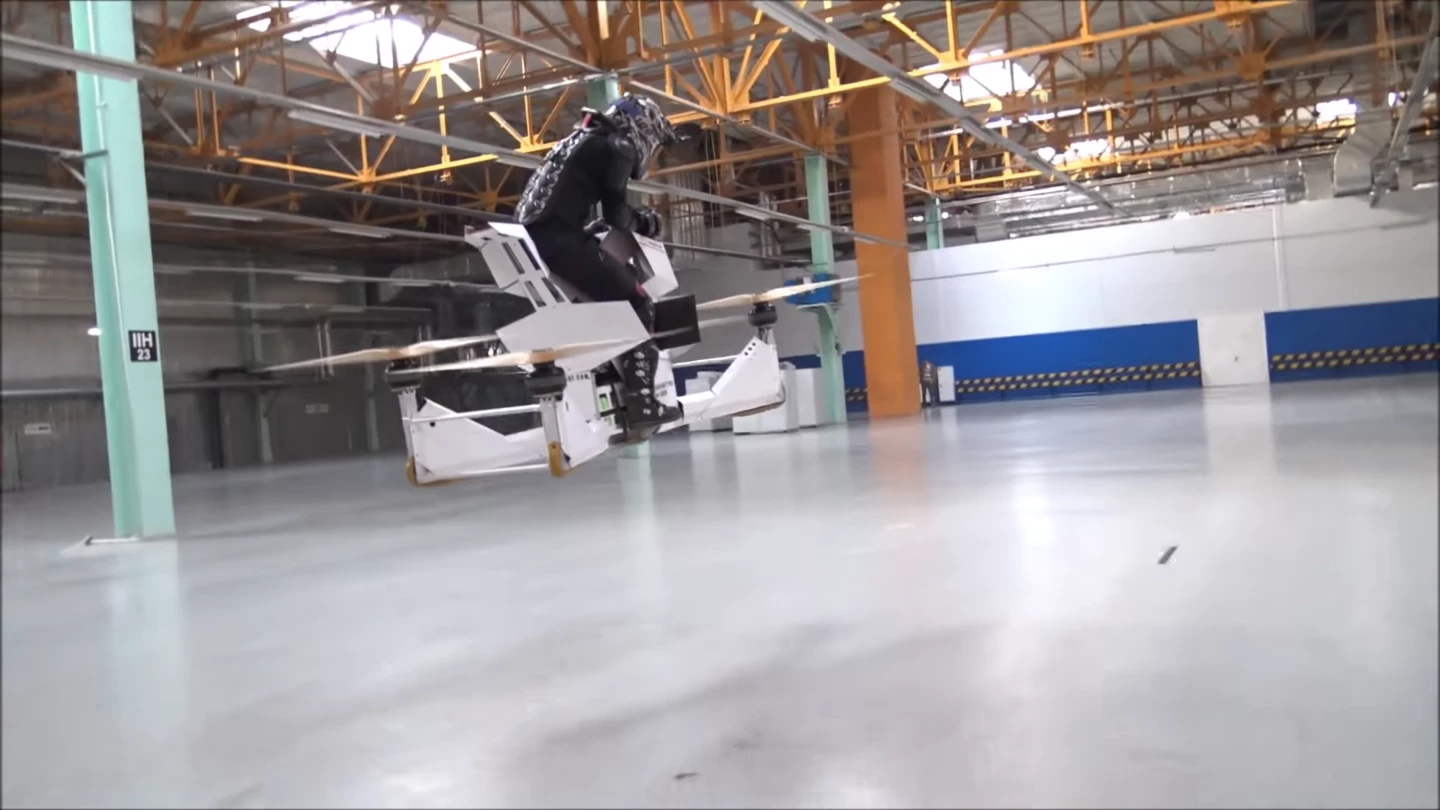
So while established aviation companies are most definitely getting on board with a new wave of electric VTOL aircraft development, there's also a maverick fringe of crazy inventors making these things in their back yards and factory spaces.
And where the big aviation companies take a safety-first risk mitigation approach, these guys are happy to use themselves as guinea pigs. They'll run some unmanned tests on the airframe, then hop on board and try a couple of tethered flights before setting up a video camera, jumping on board and taking to the skies. It's awesome, as well as viscerally terrifying, to watch.
Take this latest contraption from Moscow-based Hoversurf: a quadcopter hoverbike styled after an adventure motorcycle and lifted by four wooden rotors around the 1-meter (3-ft) range in length. A video released last week shows a rider, clad in dirt bike gear, flying the hoverbike in a warehouse, nail-bitingly close to the roof support beams. It appears to be reasonably stable.
A further video shows the team flying an earlier prototype of the Scorpion outside, over a basketball court, both unmanned and manned, with even less safety gear than above:
It's an impressive achievement. But it doesn't take a genius to spot a few pretty scary flaws.
Putting the props at the bottom of the airframe instead of above (like the Volocopter, Sky-Hopper and Jetpack Aviation designs) lets you create a lighter aircraft and a greater feeling of magic-carpet freedom for the pilot. It also looks super cool. But it means those big props are the first thing to hit the ground in an off-kilter touchdown. They'll also kick up a ton of dirt, dust, stones and grass if you attempt to take off or land anywhere but a clean, level surface.
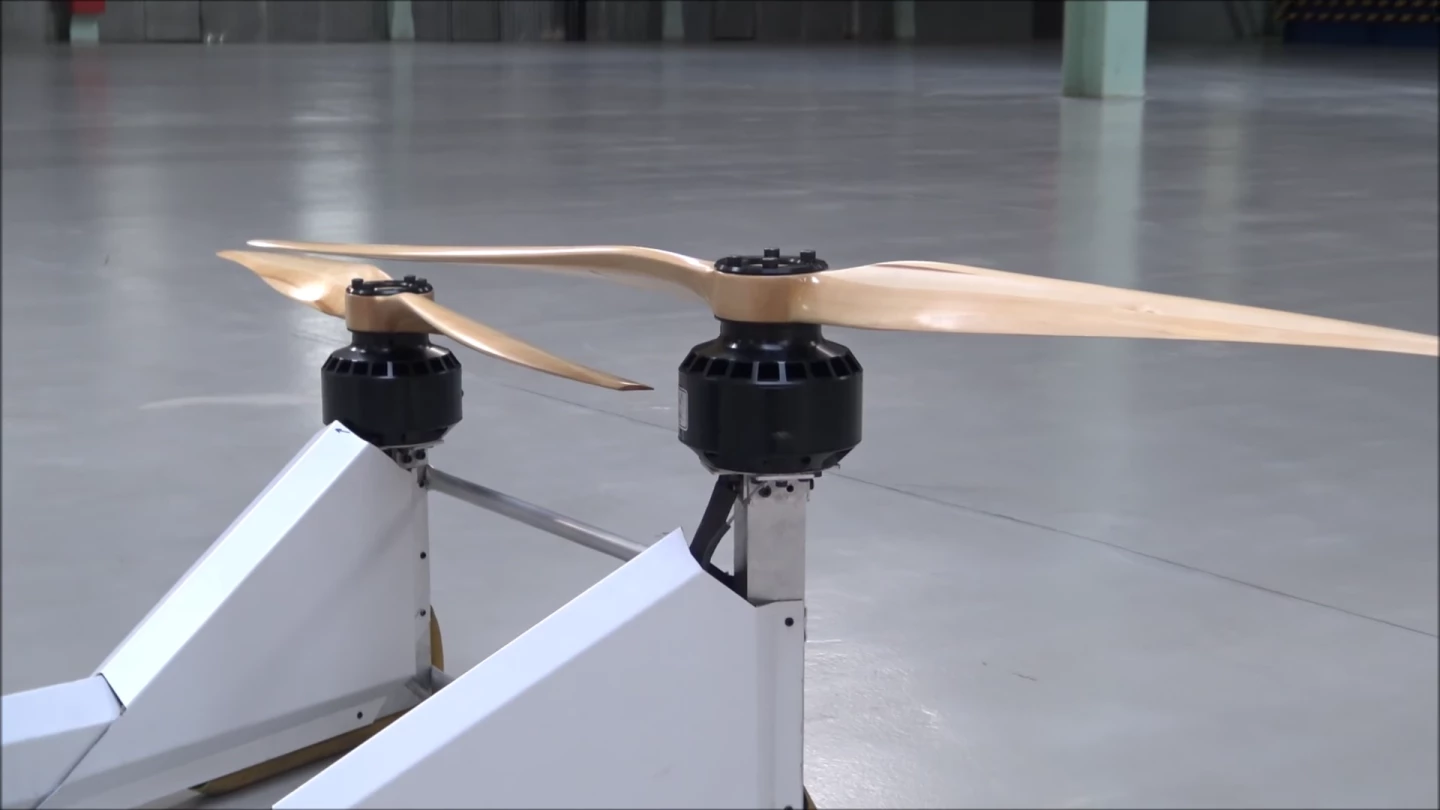
Using just four props leaves basically zero redundancy in case of motor or electronic stability control (ESC) failure, which would likely see it flip over and drop out of the sky. Such large props will be slower to respond to stabilization inputs than smaller units, potentially making for a lurchy ride when the Scorpion encounters windy skies.
And we haven't even touched on how close those damn props are to the rider's legs, and how flimsy the protective barriers are between large, quickly rotating propeller and soft, tender leg meat.
At least they seem to be wooden props and not lightweight carbon, with its tendency to shatter rather than deform.
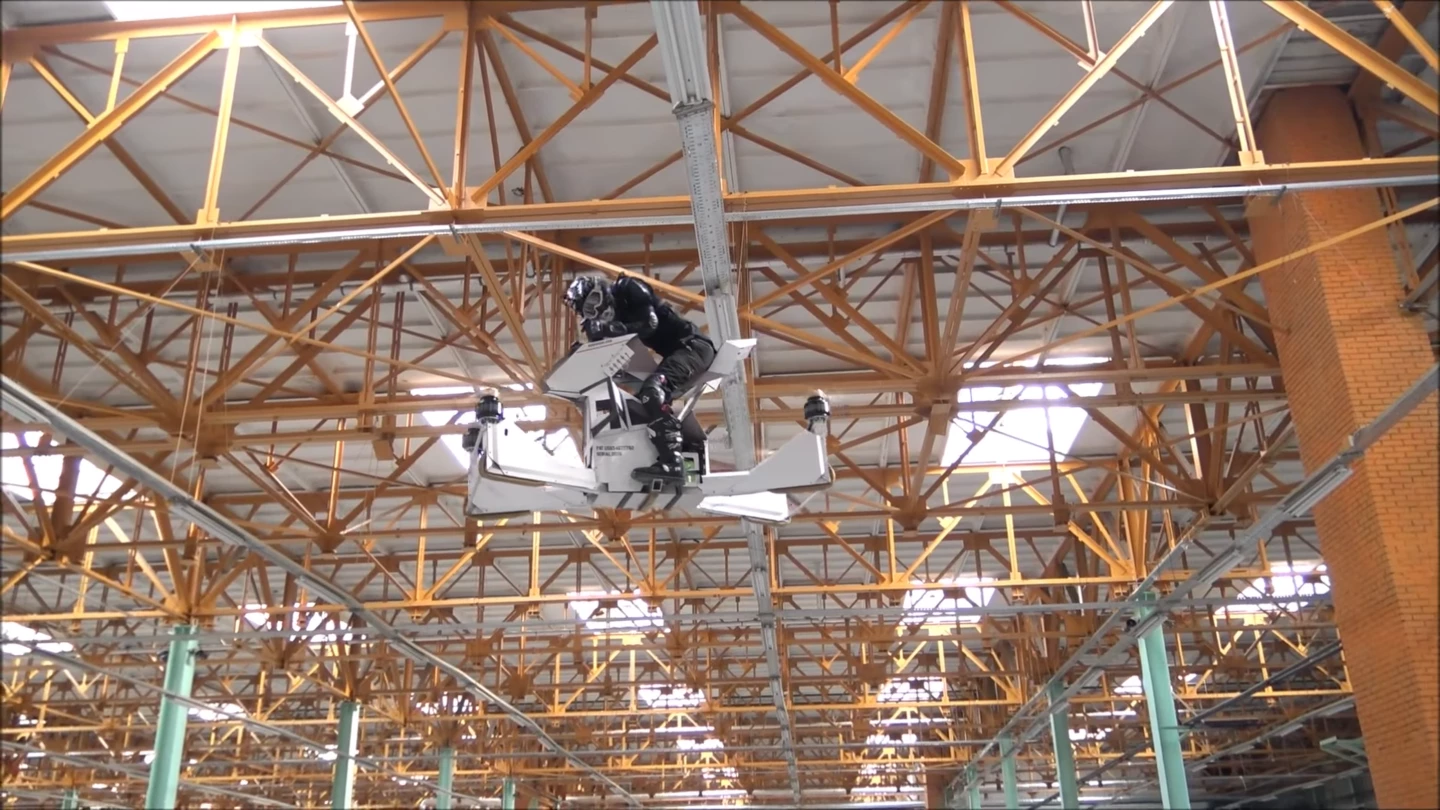
Hoversurf views the Scorpion as an early prototype of a potential adventure sport machine. But the company also has aspirations to produce and operate a VTOL air taxi service (maybe inspired by the eHang 184), as well as heavy lift, unmanned versions of a Scorpion-style airframe that could lug between 90 and 2,500 kg (around 200 to 5,500 lb) worth of cargo.
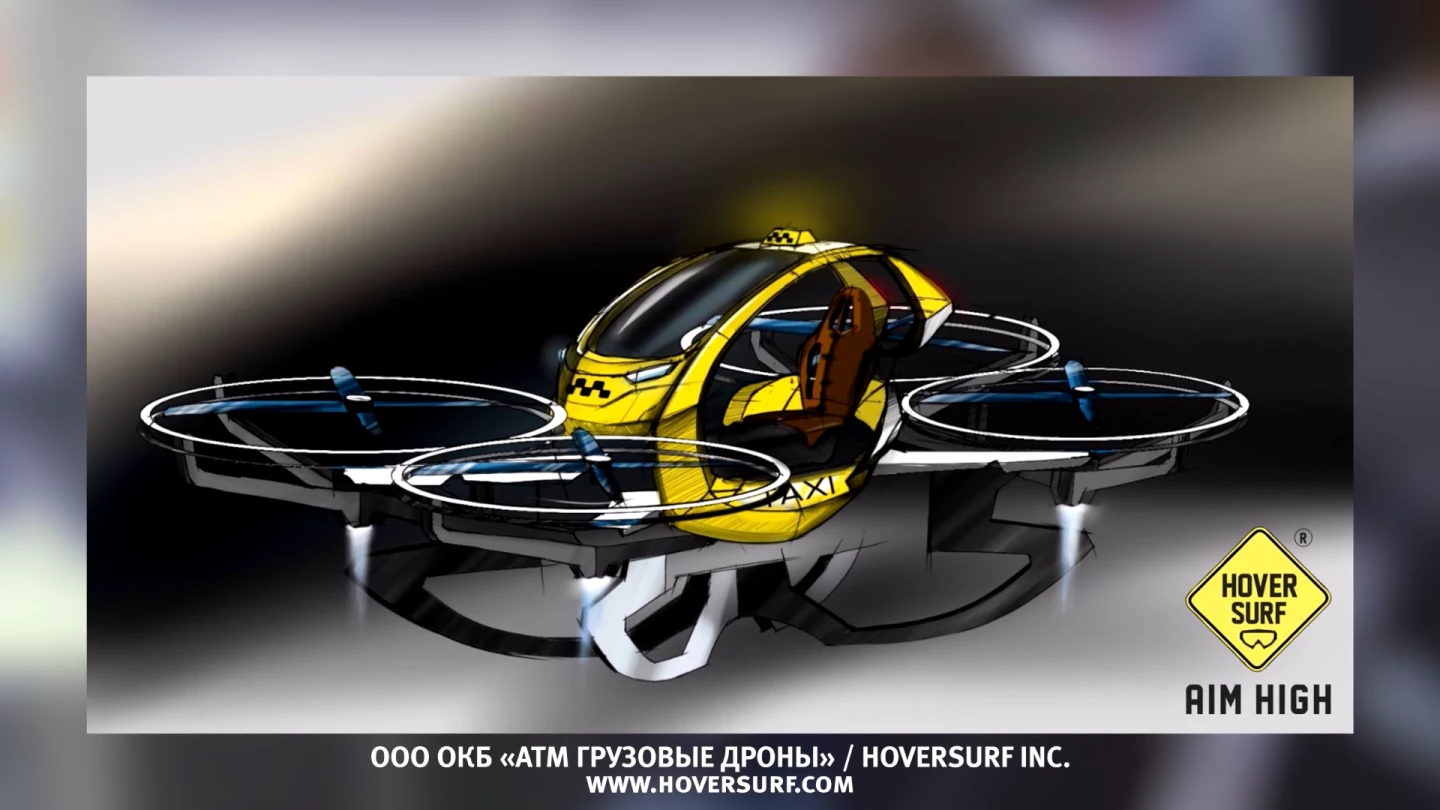
These are exciting times. The early stages of electric aviation, manned multicopters, consumer drone technology and VTOL air taxi services put the idea of three-dimensional commuting in a Jetsons-style flying car closer within reach than ever before. There's a real sense that this stuff will happen – and on a commercial scale – not only within our lifetime, but within the next decade or two.
After all, five years ago, multicopter drones were inches across, fringe R/C tech built in the garage workshops of uber-geek hobbyists. But the pace of development has been furious. Now they're already flying around in fields and warehouses with people in them. Slightly crazy people, but then, there's been no shortage of craziness in the history of human aviation.
Watch this space!
Source: Hoversurf
